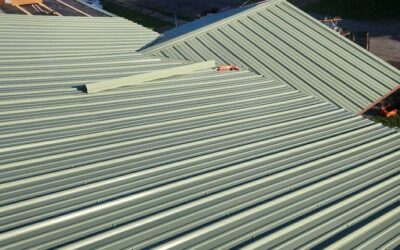Title: Roof Blistering vs. Roof Hail Damage: What Homeowners Need to Know
Introduction
Your roof is the first line of defense between your home and the elements. Whether you’re facing sweltering heat in the summer or ice storms in the winter, your roof takes a beating year-round. Over time, visible damage may begin to appear. Two of the most common types of roof damage are roof blistering and hail damage. Though they may appear similar to the untrained eye, they are fundamentally different in cause, appearance, and solution.
In this comprehensive 2800-word SEO blog post, we’ll help you identify the difference between roof blistering and hail damage, understand their causes, assess the risks, and determine how to address each type of damage properly. For homeowners in Northeast Ohio—including Jefferson, Madison, Youngstown, Ashtabula, and Cleveland—S&K Construction and Remodeling LLC provides expert roofing inspections and solutions. As an Owens Corning Preferred Contractor, we bring industry-backed experience to every roofing challenge.
Table of Contents
- What Is Roof Blistering?
- What Causes Roof Blistering?
- Signs of Roof Blisters
- What Is Hail Damage?
- How Hail Affects Your Roof
- Visual Differences: Blisters vs. Hail Damage
- Why It Matters: Insurance Claims and Roofing Warranties
- Inspection Tips for Homeowners
- Risks of Ignoring Roof Blisters
- Risks of Ignoring Hail Damage
- How Professionals Identify the Difference
- Repair Options for Roof Blisters
- Repair Options for Hail Damage
- When Is Roof Replacement Necessary?
- How Weather in Ohio Contributes to Both Problems
- Owens Corning Duration Shingles: A Protective Option
- S&K Construction and Remodeling’s Inspection Process
- Roofing Warranties and Insurance Considerations
- Why Hire a Local, Certified Contractor
- Contact S&K Construction and Remodeling Today
1. What Is Roof Blistering?
Roof blistering occurs when bubbles or raised sections appear on the shingles or roofing membrane. These blisters are often the result of moisture or air trapped between layers of roofing material. Over time, heat causes the trapped elements to expand, forming bubbles. While some blisters remain intact, others may pop, exposing the underlayment or roofing deck.
2. What Causes Roof Blistering?
Blisters typically form due to:
- Poor attic ventilation
- Trapped moisture during installation
- Low-quality roofing materials
- Extreme heat or freeze-thaw cycles
- Improper installation techniques
Blistering is more common in older roofs or roofs installed during humid weather.
3. Signs of Roof Blisters
- Raised or bubbled shingle surfaces
- Popped blisters with exposed substrate
- Loss of granules around the blister
- Irregular, random patterns across the roof
It’s important not to walk on a blistered roof, as pressure may rupture the bubbles.
4. What Is Hail Damage?
Hail damage occurs when ice balls—ranging from pea-sized to golf ball-sized—strike the roof. These impacts can cause:
- Granule loss
- Bruising of the shingle
- Cracks or holes
- Soft spots on the roof surface
Unlike blistering, hail damage is sudden and often widespread, especially after a storm.
5. How Hail Affects Your Roof
Hailstones strike with force, breaking through protective granules and leaving the roofing materials vulnerable. Over time, UV rays degrade the exposed area, leading to leaks and deterioration.
6. Visual Differences: Blisters vs. Hail Damage
Blisters:
- Circular or oval-shaped raised bubbles
- Typically smaller in size
- May or may not be popped
- Random distribution
Hail Damage:
- Sharp-edged dents or divots
- Often aligned with wind direction
- Frequently found after storms
- May have soft or bruised spots
7. Why It Matters: Insurance Claims and Roofing Warranties
One of the most critical reasons to differentiate between the two types of damage is insurance. Hail damage is typically covered by homeowner’s insurance, while blistering—especially if deemed installation- or material-related—usually isn’t.
Misidentifying damage can result in a denied claim or delayed repairs. S&K Construction and Remodeling helps homeowners document the damage accurately for successful claims.
8. Inspection Tips for Homeowners
If you suspect roof damage:
- Inspect your attic for leaks or water stains
- Use binoculars to examine roof surfaces
- Check for damage after storms
- Look for granules in downspouts or gutters
When in doubt, contact a professional.
9. Risks of Ignoring Roof Blisters
Untreated roof blisters can lead to:
- Cracked or popped shingles
- Water penetration
- Mold and mildew in the attic
- Reduced shingle lifespan
- Premature roof failure
10. Risks of Ignoring Hail Damage
Post-storm hail damage may not leak immediately but will worsen over time. Risks include:
- Interior water damage
- Rotting of roof decking
- Loss of insulation effectiveness
- Pest intrusion
11. How Professionals Identify the Difference
Trained roofers analyze:
- Shape and pattern of the damage
- Impact depth
- Weather history
- Shingle integrity
We also use moisture meters, drones, and other tools to document and analyze your roof.
12. Repair Options for Roof Blisters
Depending on the extent:
- Minor blistering: No action needed, monitor regularly
- Moderate: Replace affected shingles
- Severe: May require full replacement if widespread
Also address underlying issues like poor ventilation or improper installation.
13. Repair Options for Hail Damage
Most hail damage repairs involve:
- Shingle replacement in affected areas
- Full roof replacement if damage is extensive
- Insurance coordination
Act quickly after a storm—most policies have time limits for filing claims.
14. When Is Roof Replacement Necessary?
Roof replacement may be needed if:
- Blisters or hail damage cover more than 30% of the surface
- The roof is more than 20 years old
- There are signs of leaks or sagging
S&K Construction and Remodeling provides free inspections and honest assessments.
15. How Weather in Ohio Contributes to Both Problems
Northeast Ohio’s weather features:
- High humidity in summer
- Intense UV exposure
- Freezing winters
- Hail and wind storms
This climate makes local roofs vulnerable to both blistering and hail-related impacts.
16. Owens Corning Duration Shingles: A Protective Option
S&K Construction and Remodeling uses Owens Corning Duration Shingles with:
- SureNail Technology for enhanced grip
- Wind resistance up to 130 mph
- Algae resistance
- Durable granule retention to prevent blisters
17. S&K Construction and Remodeling’s Inspection Process
Our process includes:
- Free, no-pressure inspection
- Detailed photographic report
- Honest recommendation for repair or replacement
- Help with insurance documentation
We work quickly and cleanly—respecting your time and property.
18. Roofing Warranties and Insurance Considerations
Owens Corning Preferred Contractor status allows us to offer extended warranties. We also help you:
- Understand your homeowner’s policy
- Prepare claim documentation
- Meet insurance deadlines
19. Why Hire a Local, Certified Contractor
Choosing S&K Construction and Remodeling means:
- Familiarity with Ohio’s weather patterns
- Local references and reviews
- Better response times
- Owens Corning certification
- Full insurance and licensing
20. Contact S&K Construction and Remodeling Today
Whether you’re dealing with blistering or hail damage, S&K Construction and Remodeling LLC has the tools, experience, and knowledge to restore your roof. Don’t let damage worsen or miss out on insurance coverage due to misidentification.
We proudly serve Jefferson, Madison, Ashtabula, Cleveland, Youngstown, Chardon, Mentor, and surrounding Northeast Ohio communities.
Call us today or schedule a free inspection online—it’s fast, easy, and could save you thousands!
Conclusion
Though roof blistering and hail damage may look similar, the causes, consequences, and solutions differ significantly. Identifying the type of damage correctly is crucial for insurance claims, roof longevity, and your home’s overall protection. With the help of S&K Construction and Remodeling LLC, you can take the guesswork out of roof care.
Let us inspect your roof and guide you through your next steps—because your roof deserves expert attention.
 (440) 307-2060
(440) 307-2060


